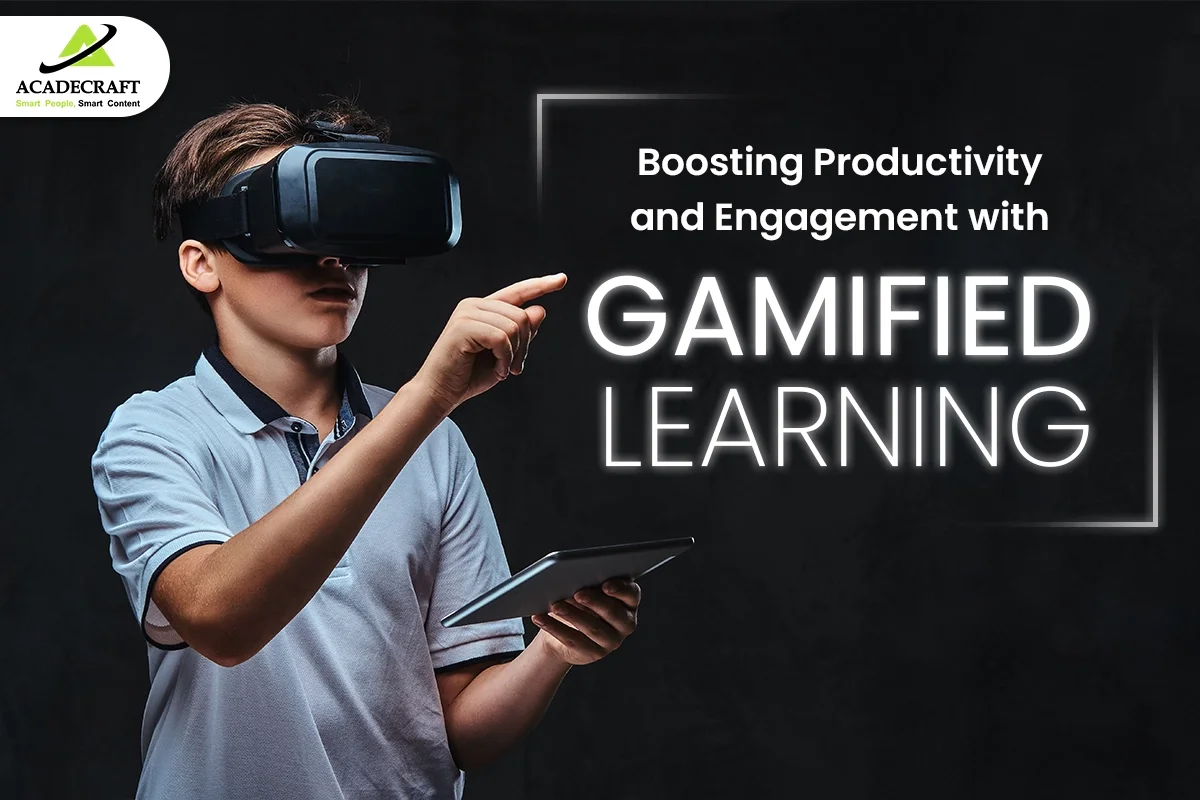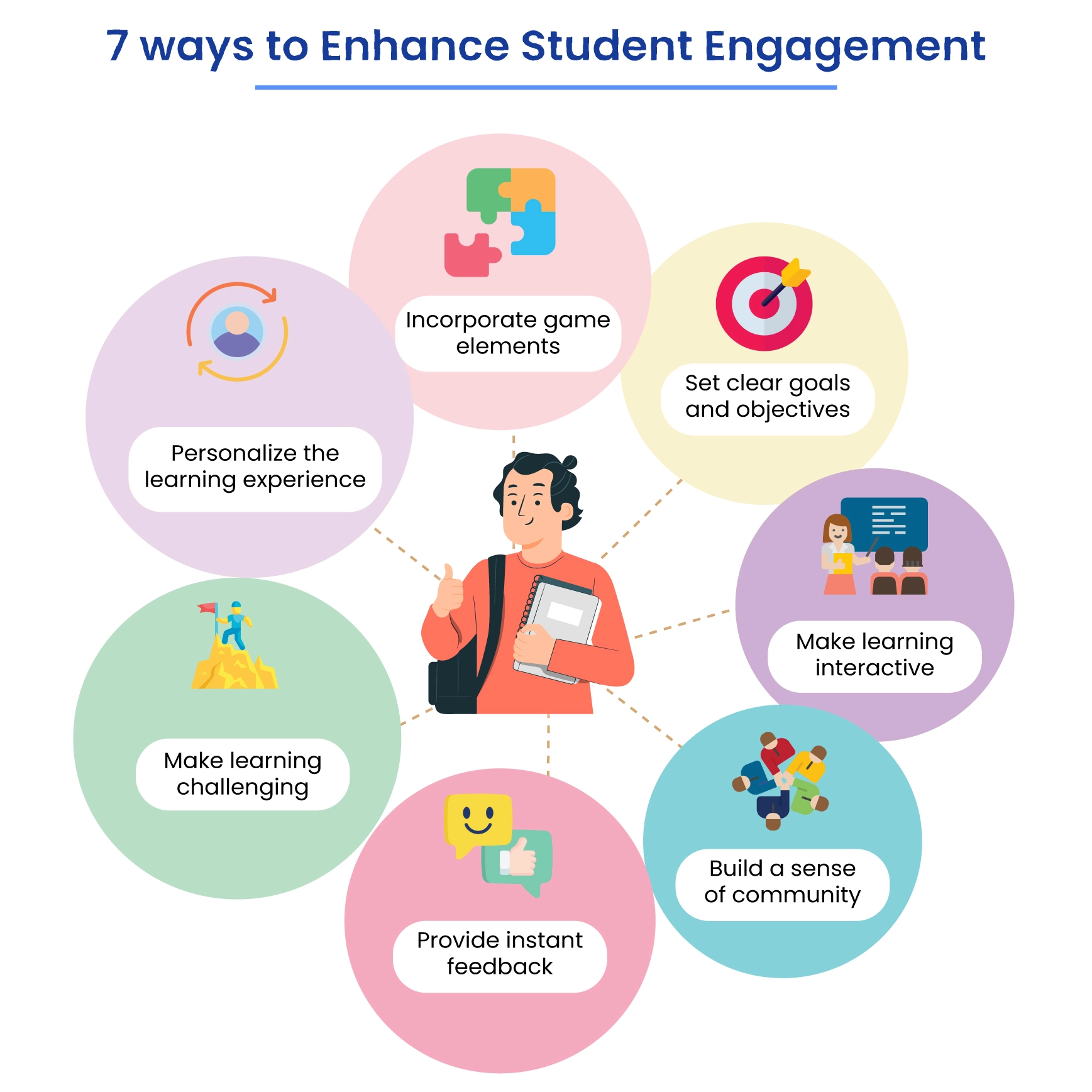
With the advent of remote learning, new teaching techniques can bring about new distractions for students. Gamification could be the key to raising student engagement and maintaining classroom unity. In this article, I will discuss the impacts of gamification on student learning engagement.
Game-based learning is not a novel concept in the field of education. In one way or another, its practice goes back centuries. With the development of wireless technologies, gamification has been given new life, with unique ways to leverage it to promote even greater learning.
As the popularity of gamification in education grows, it is essential to remember that each student seeks it uniquely. Each student contributes their attitude and life experiences as a fictional character in the classroom.
Students' learning styles and worldviews will also affect how successfully they use current gamification tools. Some people will accept it, while others will not.
For example, a student who is more of a visual learner may find it easier to use gamification tools that incorporate visuals, such as images, videos, or 3D models. Conversely, an auditory learner may benefit from instructional audio clips or podcasts that provide the same content in an auditory format.
The cultural, political, and social backgrounds shape people's learning styles and worldviews. Therefore, some people may be more comfortable with traditional learning methods, while others may be more open to gamification tools.
Additionally, some people may be more motivated by competition and rewards, while others may be more motivated by intrinsic rewards and the joy of learning.
Technology is the primary driver in the process of gamified learning. The technology does not work on engaging "players" for the game. The entire process is driven by the way a human mind is built.
The human brain is the key which typically likes to take challenges. The consciousness of the human brain hates to leave things unfinished and desires to reach the finish line first. Games amplify basic human instincts, and our human nature responds actively. No matter how many defeats, we take the challenge and ultimately succeed. It creates an ideal environment for successful learning.
Once you achieve the task, the human brain will seek to serve a greater purpose in your activities. That is where gamification excels—by offering recognition via rewards. These rewards can take a variety of forms:
A study by University of Washington has proved that engaging students in the learning process increases their attention and motivates them to engage in higher-level critical thinking.
Students are more likely to memorize and understand the material when they can participate actively in their learning. This is because they are more involved in the process, and it encourages them to ask questions and think critically, which helps to deepen their understanding of the material.
Gamification uses game design principles and mechanics in non-game contexts to engage and motivate learners. When applied to education, it can also enhance student engagement, motivation, and learning outcomes.

Gamified learning solutions can make learning fun and engrossing by introducing elements such as levels, rewards, leaderboards, and competition. This encourages students to stay engaged and motivated to learn. Additionally, research has shown that gamification can lead to improved learning outcomes, such as improved performance, increased retention of information, and better problem-solving skills.
Here are 7 ways in which student engagement can be enhanced by using gamification:
For instance, a teacher could assign different levels of activities to students based on their assessment performance, ensuring that each student is being challenged at their level.
This will help to ensure that students are not overwhelmed with tasks they cannot handle or bored with tasks that are too easy. Additionally, teachers can provide more customized support to students based on their individual needs.
By utilizing advanced gamification techniques in schools and institutions, the ed-tech framework helps increase student engagement by providing incentives and rewards for completing tasks, increasing student competition, and providing an immersive learning environment.
The education and training industry has developed much interest in gamification. Applying game-based elements to modify training methodology has been dominating the ed-tech market. The gamification market estimates billions of U.S. dollars, and this new technological innovation will likely transform the workplace environment.
Let us explore some of gamification's major benefits and drawbacks for student learning and engagement in classroom studies.
Setting gamification into hybrid learning conditions can benefit students in multiple ways. The primary goal is to improve individual student engagement. Gamified learning and teaching methods will help to achieve this goal in the following ways:
Promoting positive relationships and encouraging supportive interactions can help create a strong and vibrant student community. The community can become more connected and engaged by creating possibilities for learners to come together and interact. This can lead to greater collaboration, problem-solving, and overall well-being in the classroom.
As one of the most beneficial ed-tech technologies, gamification can have some drawbacks, too, impacting student engagement and learning. It is important to be aware of these potential pitfalls and take steps to create an environment of inclusion and respect. Some prominent drawbacks are:
The ed-tech environment becomes useful for growing student engagement and learning outcomes by utilizing well-equipped gamified classroom education systems. Yet, it is essential to carefully consider the advantages and disadvantages before implementing them in schools or institutions.
Interesting Read:- Challenges of Gamification in Education and How to Overcome Them?
There is a clear trend towards blending or integrating game-based learning with other educational activities, even though eLearning gamification can also be employed as a single-player learning strategy.
For example, a recent study on a group of target learners discovered that a micro-learning guide generates more engagement and keeps retention power at higher levels. The advantages of learner engagement are expected to increase significantly when microlearning and eLearning gamification are combined.
eLearning gamification can be combined with other teaching methods to make the curriculum more immersive and engaging. Consider participating in an online, gamified VR Pandemic by Prisms module where you can learn equations and exponential functions of Algebra in selecting an insightful course of action in the event of public health issues, such as a pandemic with a built-in virtual environment.
Employing cutting-edge technology in classrooms can potentiate student motivation and engagement in the learning process. Various challenges of gamification in education can be catered to make the learning process more inspiring and informative. The usefulness of awards and scores, developing a sense of community, and immersive learning environments will all contribute to the ed-tech framework's ability to raise student engagement.
References:
https://teaching.washington.edu/topics/engaging-students-in-learning/
Share